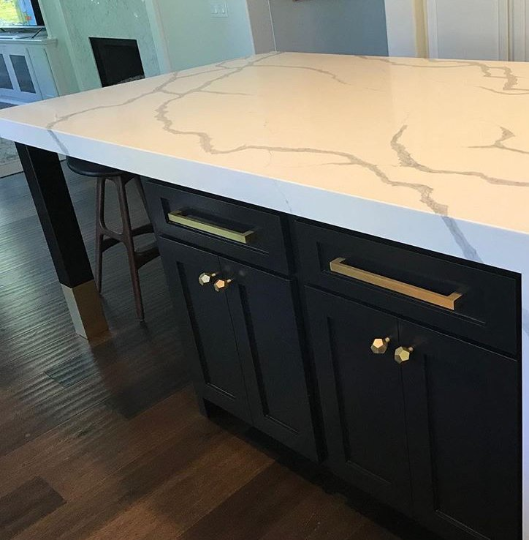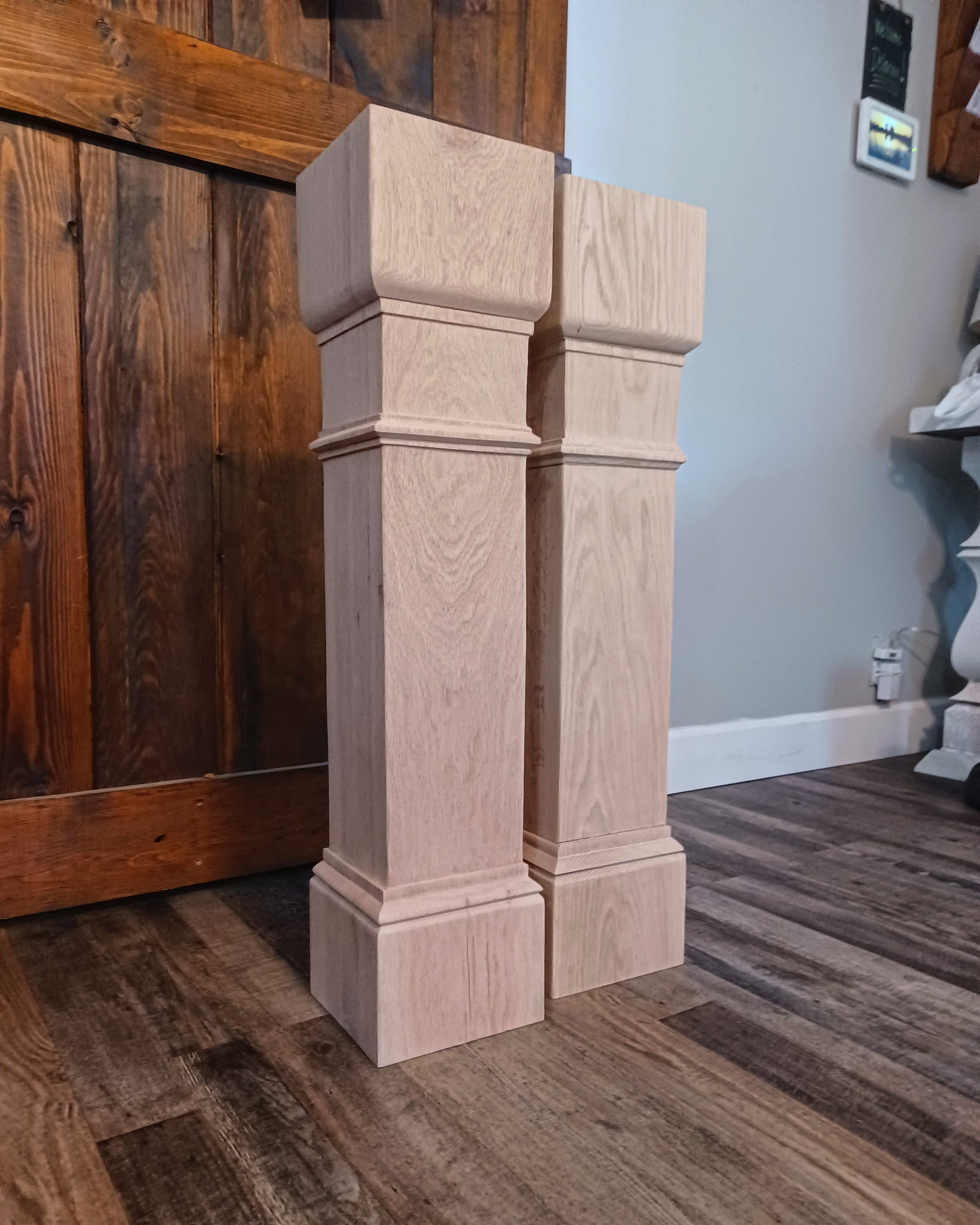Key Factors To Consider for Discovering the very best Legs For Kitchen Area Island for Your Design
When picking the excellent legs for your cooking area island, a number of essential considerations enter into play that can substantially affect both functionality and visual appeals. The selection of style, height, and product need to align with your total kitchen area design to make sure a harmonious appearance. Furthermore, security and maintenance needs are vital for long-term usage and ease of treatment. Understanding these variables can enhance your kitchen area's practicality and visual appeal, but the nuances of each consideration can frequently be forgotten. What ramifications might these selections carry your kitchen area's total environment?
Determine Your Style Preference
Identifying your design choice is critical when selecting the optimal legs for your kitchen area island. The legs of your cooking area island not just offer a functional purpose but likewise contribute substantially to the general visual of the area. Recognizing your layout style-- be it contemporary, rustic, standard, or industrial-- is vital.
For a contemporary kitchen area, think about smooth, minimalistic legs that match clean lines and open spaces. In comparison, a rustic setting may gain from even more robust, farmhouse-style legs made of reclaimed products. Typical kitchens often prefer transformed or elaborate legs, which can add a touch of style and refinement. At the same time, an industrial aesthetic could require steel legs that stress a raw, incomplete look.
In addition, consider the elevation and proportion of the legs in regard to the island's surface area. This guarantees the aesthetic equilibrium and functionality needed for everyday use. Assessing the existing elements in your kitchen area, such as kitchen cabinetry and appliances, can likewise guide your decision, making sure cohesiveness in layout. Ultimately, your style choice will certainly influence not only the option of legs yet also the general consistency of your cooking area's layout.
Select the Right Product
Picking the appropriate product for your cooking area island legs is pivotal in guaranteeing both sturdiness and visual charm. Different products use unique benefits, and the option frequently mirrors your layout preferences and functional requirements.
Timber is a popular selection, providing warmth and convenience. It can be tarnished or repainted to match your cooking area style, making it versatile to different designs, from rustic to contemporary. However, wood might call for normal upkeep to protect its appearance and integrity.

If you seek an one-of-a-kind touch, consider acrylic or glass products. They can develop an illusion of area and agility in your kitchen area, making them a superb choice for smaller locations - Legs For Kitchen Island. However, these choices might call for careful handling and maintenance to prevent scrapes.
Eventually, the product you pick should line up with your kitchen area's total layout, ensuring that the legs serve both attractive and functional purposes.
Think About Elevation and Proportions
When developing a kitchen area island, elevation and percentages play a critical duty in making certain functionality and comfort. The typical elevation for a kitchen island normally varies from 36 to 42 inches, lining up with traditional counter heights or bar heights, respectively. This dimension is vital for integrating with bordering kitchen counters and feceses, enabling ease of her comment is here use throughout dish preparation and social interactions.
Additionally, the island's percentages have to match the general kitchen layout. A well-proportioned island needs to not bewilder the area; rather, it needs to produce a balanced visual. Take into consideration the proportion between the island's size and size, ensuring it gives appropriate surface area without crowding the kitchen. A basic guideline is to maintain a size of 24 to 48 inches, helping with movement and access.
Additionally, the height of the legs or base can affect the visual charm and functionality. Taller legs might lend a much more modern, ventilated feeling, while shorter ones can stimulate a conventional, based appearance. Inevitably, thoroughly taking into consideration height and percentages will certainly result in a cooking area island that is both visually attractive and functionally efficient, improving the total design of the area.
Assess Security and Sturdiness
A cooking area island's legs must not only enhance its height and proportions however additionally supply ample stability and durability to sustain daily activities. The legs are essential to the general capability of the island, as they bear the weight of the countertop and any type additional hints of added lots, such as appliances or cooking tasks.
When examining security, it is crucial to think about the leg style and product. For example, sturdy metal or solid hardwood legs typically use premium toughness compared to lighter materials like crafted timber or plastic. Furthermore, a larger base can improve stability, decreasing the risk of tipping or wobbling throughout usage.
Durability is just as vital; the legs need to stand up to damage from day-to-day usage. Think about surfaces that safeguard against scrapes, damages, and wetness, particularly in a kitchen environment. Assess the quality of building and construction, such index as fastenings and joints, which can significantly influence the legs' long-lasting performance.
Inevitably, purchasing well-crafted legs that prioritize security and sturdiness will guarantee your kitchen area island remains a reliable work space for many years to come, improving your culinary experiences while keeping aesthetic allure.
Aspect in Maintenance and Treatment
Maintenance and treatment are crucial factors to consider for guaranteeing the long life and performance of cooking area island legs. When choosing legs, it is essential to review the materials used, as different alternatives require differing levels of upkeep. For circumstances, wood legs might require periodic refinishing or sealing to stop wetness damages and scratches, while steel legs might need routine brightening to preserve their sparkle and prevent rust.
Moreover, the surface put on the legs can affect maintenance requirements. A high-gloss layer may be simpler to tidy yet could show fingerprints and scrapes a lot more conveniently than a matte finish. It is recommended to select products and coatings that enhance your lifestyle; for instance, if you often hold events, choose sturdy products that can withstand wear and tear.
Furthermore, think about the cleaning process associated with preserving these legs. Smooth surfaces commonly need very little initiative, while complex styles might collect dust and gunk, requiring more labor-intensive cleaning methods. Legs For Kitchen Island. Ultimately, considering the upkeep and treatment required for your selected kitchen island legs will not just boost their visual charm however also ensure their functional honesty with time
Final Thought
To conclude, choosing the optimal legs for a kitchen island demands mindful consideration of different factors, including layout style, product selection, security, height, and upkeep. Each aspect plays a vital function in guaranteeing that the legs not only boost the aesthetic allure of the kitchen area but additionally supply the required support and longevity for daily use. An educated decision will inevitably add to a functional and aesthetically pleasing kitchen setting.
The legs of your kitchen island not just serve a useful purpose yet also add considerably to the total aesthetic of the room.Maintenance and treatment are crucial factors to consider for guaranteeing the long life and performance of kitchen area island legs. Wood legs may need periodic refinishing or sealing to protect against moisture damages and scrapes, while metal legs might require regular brightening to keep their shine and stop corrosion.
Ultimately, factoring in the maintenance and treatment required for your selected cooking area island legs will certainly not only improve their visual allure but likewise guarantee their useful integrity over time.
